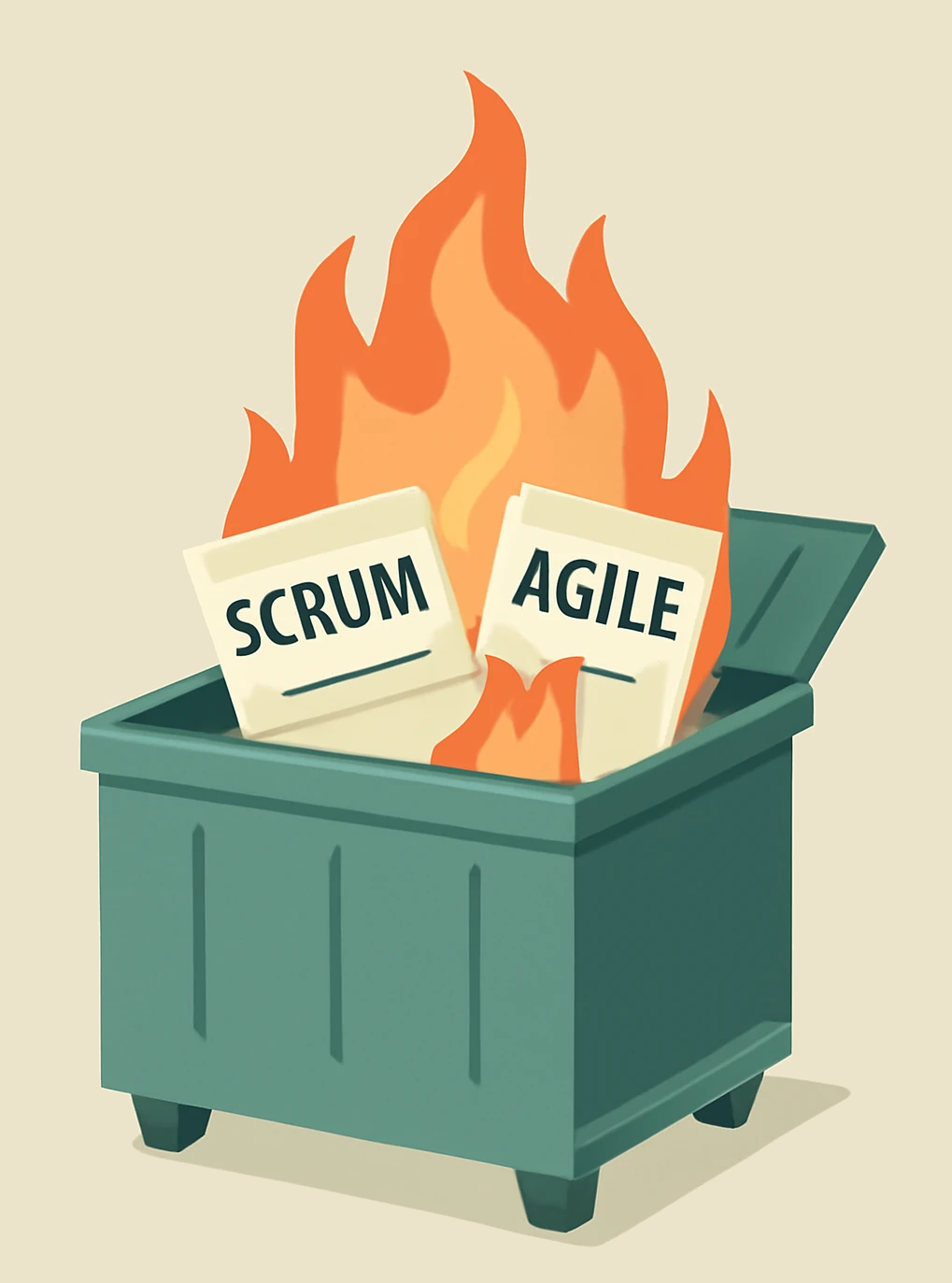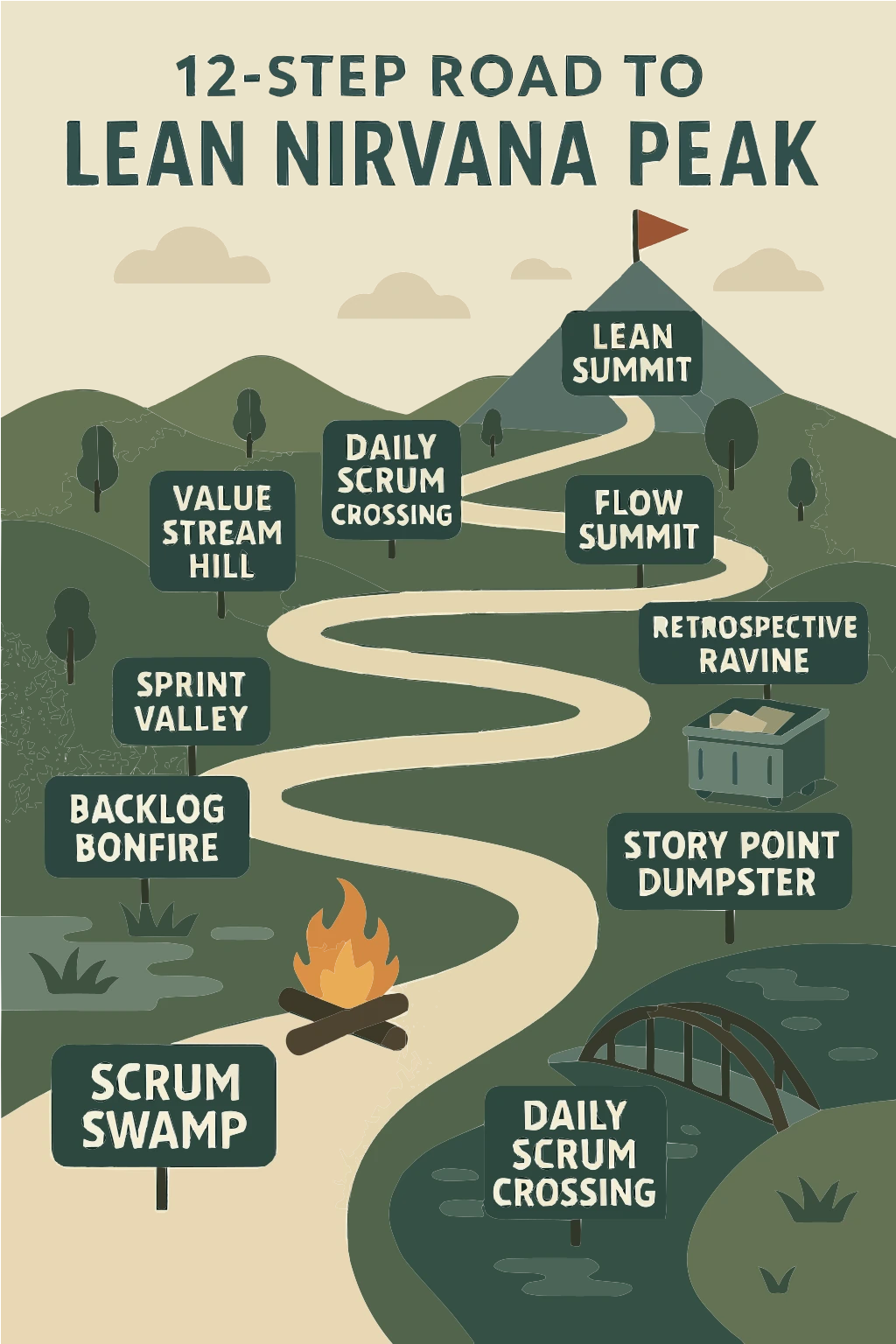Scrumnonymous
Scrum ceremonies piling up like empty pizza boxes? Sprint burndown giving you heartburn? Have you compulsively estimated a sandwich in story points??
Welcome to Scrumnonymous, where we admit we're powerless over scummy Agile and decide to hand our schedules—and sanity—over to Lean Software Development principles.


A Program for Scrum Recovery
Call Out Pure Waste—Don’t Just Tolerate It
Scrum’s ceremonies and artifacts often drift into pure process waste. Lean principle: ruthlessly identify and remove anything—meetings, rituals, or tools—that doesn’t lead to customer value, using the classic Seven Types of Software Waste as your lens.
Replace Sprints with Continuous Flow
Timeboxes introduce artificial delays and batch-thinking. Lean principles dictate continuous pull flow and limiting WIP—so value gets to customers as soon as it’s ready, not at the next retro.
Expose Backlog Bloat—Prioritize with Customer Value in Mind
A backlog is not a product plan; it’s a wishlist that often outlives reality. Lean asks: what is truly valuable to the customer right now? Cut the rest.
Identify and Make Visible Every Form of Waste
Map your value stream and expose handoffs, rework, partial work, context switches or signoffs slowing you down—even those “protected” by official frameworks.
Own Up To the Team Damage Caused by Framework Theater
Process metrics and forced ceremonies can erode trust and engagement. Admit when process choices undermine ownership and morale. Empower teams by exposing and fixing these harms.
End Estimation Theater—Work by Facts, Not Guesswork
Story points and estimation poker are unreliable proxies for reality. Use real cycle time, throughput, and defect data; learn, adapt, and improve with metrics that stand up to scrutiny.
Make Decisions With Evidence and Flexibility
Don’t lock into plans or commitments based on guesswork. Lean enables you to defer irreversible decisions until the ‘last responsible moment,’ using historic outcomes and experiments to guide choices.
Confront the Human Cost of Agile Theater
Every misguided metric or vanity report impacts product owners, engineers, and users. Lean teams are candid about mistakes so underlying issues get solved, not wallpapered.
Expose Systemic Friction—Build in Quality and Learning
Swap out status updates for transparent system health signals: cycle time, release frequency, defect rates, and direct customer feedback. Build in feedback loops so the system self-corrects.
Instill Continuous, Data-Led Improvement
Continuous improvement (kaizen) isn’t a meeting: embed it in tooling, habits, and daily review of flow metrics. Test changes, measure impact, keep what works.
Go to the Gemba: See Real Work Without Mediation
Abandon management by report. Learn by observation: go where value is created, collaborate with those doing the work, and empower the people closest to the problem.
Share Proven Practice—Help Others Build for Real Value
Don’t evangelize another framework. Share tools and real lessons that have driven out waste, built quality, and delivered value—let others choose what helps them escape zombie Agile.